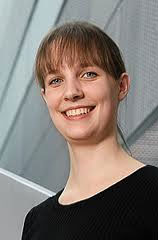Welcome to the international (English-speaking) blog of the Department of Computer Science at the University of Helsinki. Our blog invites views on research, education, student life, and other societal themes connected to our computer science fields. The intention is to build a forum as an open window for readers from inside and outside computer science. If you have any good ideas or articles to share on this blog, please feel free to contact us: cs-blog [ät] cs.helsinki.fi.
Electronics in the Cold
by Jussi Kangasharju
For two years, my group has conducted research on data center cooling optimizations, and as part of that work, we have had computers out on the roof terrace of Exactum for over 2 years, in all sorts of enclosures. For a full recap of our research, please see Mikko's excellent blog (which also discusses washing of keyboards in a dishwasher).
The department's strategy day provided us with a unique opportunity to expand the scope of our research into unexplored territory. Haikko has a cold room, where temperatures go down to -110 C. This tempting opportunity was obviously too good to be missed, thus we assembled a team of brave and tough volunteers to embark on a journey where no mobile phone had gone before. (Yes, we have certificates saying that we are brave and tough.) Let us call the members of our team of 5 intrepid explorers: Jussi, Markus, Mikko, Pekka, and Seppo (names have been changed to protect the participants).
We decided to take mobile phones with us instead of laptops for three reasons:
1. The cold might actually break the devices and replacing phones is cheaper than replacing laptops.
2. Phones have been tested to about -40, meaning that we would be breaking their record by 70 degrees. (For computers, our work of running them at -20 C is the lowest among published research, thus we already hold the record for normal computers.)
3. The third reason became apparent only after the visit, since the room would have been too small to hold 5 persons with laptops.
As test equipment, we chose a Nokia E71 ("Jussi"), an iPhone 4 ("Pekka"), and some random Android phone ("Mikko"). "Markus" and "Seppo" carried no phones and their role was to act as a control group. Before the start of the test, "Jussi" called "Pekka" and the connection was kept open and on speaker phone during the whole test.
 |
|
View inside the cold room. |
We had been instructed to wear swimming trunks and socks, and were provided with felt slippers, gloves, and a head band to protect the ears. Eye glasses had to be left out, but contact lenses were ok, although the rooms were so foggy that you could not see more than 10 cm in front of you anyway.
The actual visit goes through three rooms, first with a temperature of -30 C, the second -60 C, and the last -110 C. The stay in the last room is limited to three minutes, meaning that we had to interrupt the experiment when our instructor came to fetch us.
Our main observations from the experiment:
1. -110 C is pretty cold.
2. The phones worked flawlessly both during and after the test.
3. The control group also worked flawlessly both during and after the test.
4. It was a great experience.
In summary, -110 C is definitely not immediately fatal to electronics (nor people), but further study is required to ascertain effects of long-term exposure to extreme temperatures.
All this science came at a great personal sacrifice on the part of the brave team. The manufacturer of the cold equipment recommends avoiding sauna for 3 hours after the visit, although our instructor said 30 minutes would be sufficient. Nonetheless, the timing of the dinner meant that we did not have time to wait for sauna and had to settle for beer instead of sauna plus beer.
On behalf of the whole team,
Jussi
You can read more about this year's strategy seminar in the story by Ella Peltonen.
Kommentit
The CS Blog Task Force
 Aaron is doing his PhD in the NODES group at the CS department. His research focuses on mobile computing and energy efficient design for multi-interfaced mobile devices.
Aaron is doing his PhD in the NODES group at the CS department. His research focuses on mobile computing and energy efficient design for multi-interfaced mobile devices.
 Giulio is a Professor at the CS department. His area is Human-Computer Interaction. For more information, please find his homepage here
Giulio is a Professor at the CS department. His area is Human-Computer Interaction. For more information, please find his homepage here
 Doris is a researcher at the CS department and HIIT, doing her PhD in the neuroinformatics research group. Her research interests include graphical models, causal discovery, and time series.
Doris is a researcher at the CS department and HIIT, doing her PhD in the neuroinformatics research group. Her research interests include graphical models, causal discovery, and time series.
 Laura is doing her PhD at the CS department. Her research interests include knowledge and link discovery, bioinformatics, and data mining.
Laura is doing her PhD at the CS department. Her research interests include knowledge and link discovery, bioinformatics, and data mining.
http://www.cs.helsinki.fi/en/people/langohr

Lisää kommentti